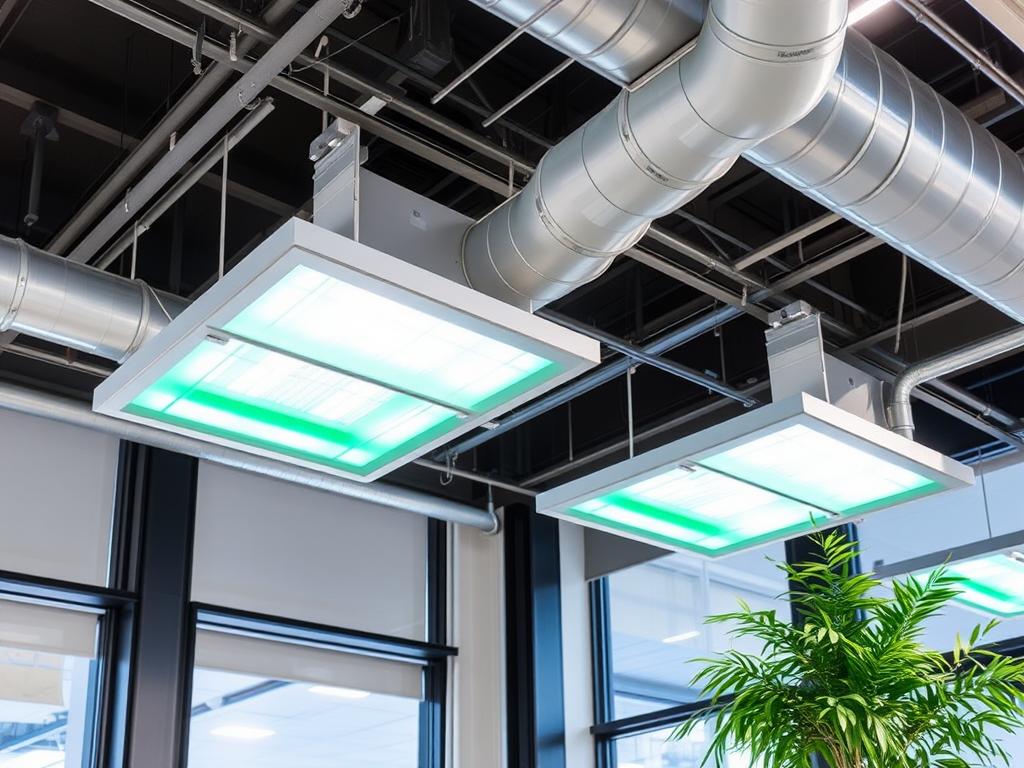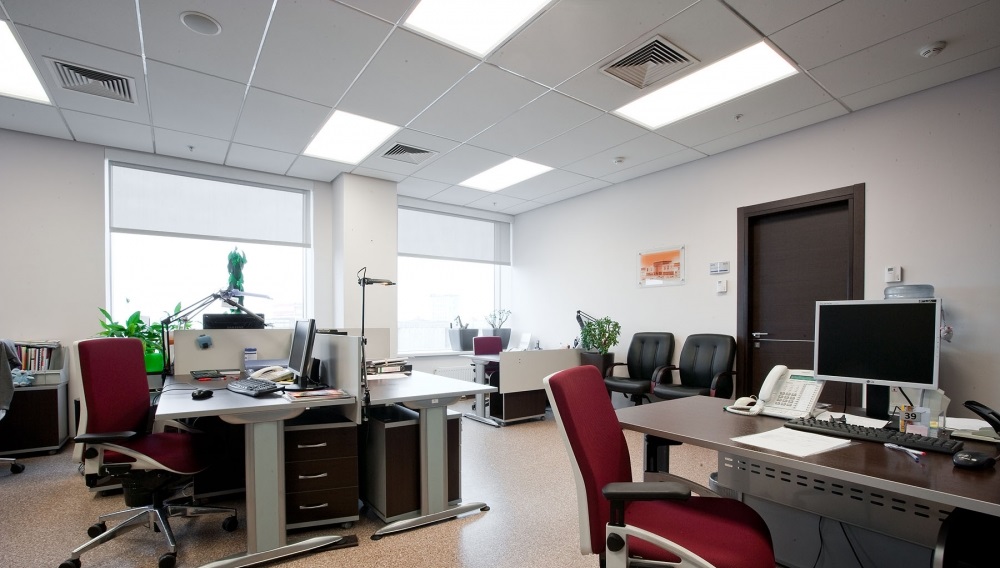Ventilation in offices: employee comfort and productivity. Ventilation in the office: features of office ventilation, efficiency, types and features of office ventilation
In the modern business environment, the quality of air in the office directly affects the performance of employees, their well-being and even the success of the company. Properly organized ventilation in the office is not just a convenience, but a necessity. It provides stable air exchange, normal humidity levels, comfortable temperature and fresh air supply, which has a positive effect on work efficiency.
Ventilation in the office plays a key role in maintaining the comfort and health of employees. The ventilation system provides fresh air and optimal temperature. Without a ventilation system, the air in the room becomes stagnant, which is detrimental to performance. In office buildings and business centers, a ventilation system is needed for stable air distribution. A constant flow of fresh air reduces humidity, odors, and improves the microclimate. Ventilator — an online ventilation store with a large selection of devices for ventilation in office spaces. Call: +38 (044) 238-24-81.
Ventilation in offices: why high-quality office ventilation is important for employee comfort

In office spaces, a large number of people usually work in a limited space. High loads, equipment, artificial lighting, and poor natural air exchange — all this leads to the accumulation of carbon dioxide, an increase in temperature, and a decrease in oxygen levels. Ventilation in the office should solve the following tasks:
- Ensuring the flow of fresh air from the street
- Removing exhaust air, odors, dust
- Maintaining a comfortable microclimate (temperature and humidity)
- Reducing the risk of diseases among employees
Thus, office ventilation creates a healthy and comfortable environment for employees, which directly affects their performance and overall productivity.
Features of office ventilation: ensuring a comfortable microclimate in the office
Ventilation of office premises should take into account not only the number of people, but also the features of the layout and location of work areas. It is important to maintain an optimal level of humidity and air temperature to avoid discomfort and the development of fungus or mold on the walls. High-quality air exchange helps maintain fresh air, eliminate unpleasant odors and preserve the health of employees.
Ventilation in office premises is a key factor in comfort, employee efficiency and a healthy microclimate. A large number of people are in the office every day, so the ventilation in your office should take into account the air flow rate, the amount of fresh air and the specifics of the work areas. In large office buildings, ventilation and air conditioning should work in harmony, providing fresh air and optimal temperature.
You need ventilation in the office that meets the conditions of the office premises, the type of work and the layout. Different ventilation requirements depend on whether it is an open space, a cabinet system or a combined layout. The design of the ventilation system should take into account the air flow rate per employee, as well as the level of humidity and heat exchange.
Mechanical office ventilation ensures stable air exchange regardless of weather conditions. Such a system maintains the air in large office buildings at a stable level, purifies it and reduces humidity. A modern office ventilation system is a reliable solution for businesses that strive to create safe and comfortable working conditions.
Consequences of poor office ventilation: fatigue, headaches and reduced employee productivity
A poor-quality ventilation system in an office is easy to recognize by its symptoms - fatigue, headaches, dizziness. In office premises without ventilation, the air in the room deteriorates, humidity increases, and odors appear. Without a ventilation system, the level of carbon dioxide in large office buildings and business centers increases sharply.
The ventilation system provides the required amount of air and air distribution according to the number of people. Your office needs ventilation with controlled air flow.
Insufficient or improperly designed ventilation in the office leads to a number of negative consequences:
- Rapid fatigue, decreased concentration
- Headache and poor health during the working day
- Increased number of sick leave due to acute respiratory viral infections and allergies
- Decreased employee productivity
- Decreased level of satisfaction with working conditions
Lack of quality ventilation in the office not only harms the health of employees, but also affects the efficiency of the company as a whole.
Types of ventilation systems for offices: natural, mechanical and supply and exhaust ventilation in the office
The ventilation system in the office must take into account The number of people, air flow rate and volume of the room. The ventilation system can be supply or supply-exhaust. Ventilation systems with supply air filtration are suitable for ventilation in office premises.
In large office buildings and business centers, mechanical office ventilation is often installed. Such systems control air flow and maintain humidity levels.
The choice of a ventilation system in an office depends on the type of room, the number of employees, the number of floors of the building and other factors. The main office ventilation systems:
- Natural ventilation — is based on the natural movement of air through ventilation ducts and open windows. The effectiveness of such ventilation decreases in sealed offices and in the cold season.
- Mechanical ventilation — uses ventilation units with fans to provide air supply and exhaust. This is a reliable solution for modern office buildings.
- Supply and exhaust system with heat recovery — an energy-efficient system that not only supplies fresh air, but also retains heat through recovery, which allows you to save on heating.
The choice of ventilation systems for offices should take into account efficiency, energy saving and the ability to maintain comfortable conditions for employees.
Features of ventilation in offices: examples of solutions for open space, offices and meeting rooms
In large office buildings and business centers, open space with a large number of people requires a ventilation system with high air flow. In offices, the ventilation system must ensure a constant supply of fresh air. A supply ventilation system with automation adapts the air distribution to the number of people.
In ventilation in office premises, it is important to take into account the characteristics of each space. Different ventilation systems are suitable for the office, taking into account the air flow rate.
Different office spaces require an individual approach to ventilation:
- Open Space — centralized ventilation systems with branched air ducts, equipped with automatic humidity and temperature control, are best suited. Integration with an air cooling system is recommended.
- Individual offices — wall or duct installations with recuperation are effective, which allow you to adjust the microclimate in each room separately.
- Meeting rooms — It is important to ensure rapid air exchange to prevent the accumulation of CO₂, so ventilation units with timers or presence sensors are often used.
Proper ventilation design for each type of office space ensures comfortable conditions and supports employee productivity.
Energy efficiency and automation of office ventilation systems: cost optimization and comfort

A modern ventilation system in an office must be energy efficient and automated. A ventilation system with humidity and CO₂ sensors automatically regulates the air flow. In office spaces, supply and exhaust ventilation allows you to reduce energy consumption and maintain the flow of fresh air.
Automated ventilation in the office plays an important role in stable air exchange. Such a ventilation system provides an optimal microclimate and increases work efficiency.
Modern office ventilation systems must be not only effective, but also energy-saving. Automation allows you to:
- Control air quality using CO₂, humidity, and temperature sensors
- Adjust system operating modes according to the office schedule
- Minimize electricity costs for heating and cooling
- Ensure optimal air exchange without unnecessary energy consumption
The use of heat recovery systems can reduce office heating costs by up to 50%, which is especially important for large office spaces.
Office ventilation requirements and design features of office building ventilation systems
When designing office ventilation, it is important to consider:
- Number of employees and area of office space
- Features of the building and room layout
- Requirements for minimum air exchange and quality air
- The need for integration with heating and cooling systems
- Ensuring a comfortable temperature and humidity level
Professional office ventilation design will help create an optimal microclimate that will increase employee productivity and comfort.
Conclusions and recommendations for choosing ventilation systems for the office and maintaining employee productivity
- Office ventilation is a key factor for the health and comfort of employees, which directly affects the company's productivity.
- For small offices, local systems with mechanical ventilation are effective and exhaust.
- Large open space offices require centralized ventilation systems with automatic regulation.
- Be sure to consider energy efficiency, the possibility of heat recovery and automation of ventilation processes.
- It is better to entrust the design of ventilation to professionals in order to take into account all the requirements for ventilation of office premises and optimize costs.
You can order an effective ventilation system for the office at ventilator.ua — modern ventilation units with heat recovery, air quality sensors and wide automation capabilities are available here. Ensure comfort and efficiency of work — breathe fresh air every day.
A correctly selected ventilation system in the office — is the key to staff health and efficient work. The ventilation system should provide ventilation and air conditioning, meet the number of people and the needs of the office. The ventilation system in your office should control humidity, odors, and air distribution.
Advice on choosing ventilation systems takes into account the types and characteristics of office premises. Ventilator will help you choose a ventilation system that meets all standards. Contact the Ventilator online store — +38 (044) 238-24-81.



















Write a comment